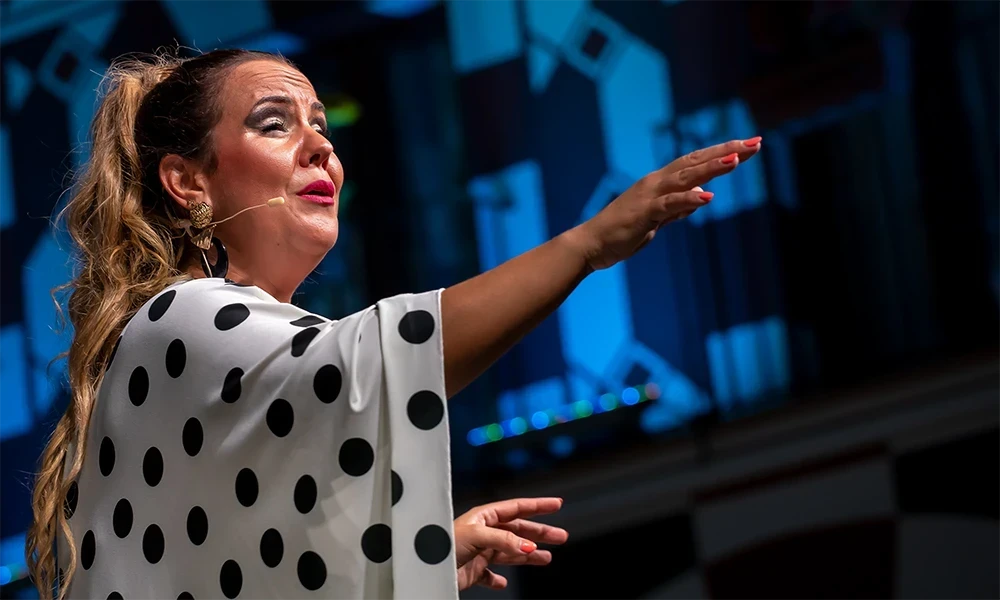Interview at PalopFlamenco

«The saetas are very flamenco and they allow us singers to pray in a different way»
Esther Merino (Gévora, Badajoz 1984) needs no introduction, especially once you have heard her. On Wednesday, April 5, whoever has not done so, has a new opportunity to enjoy her grip and strength in the Poetic-Musical Exaltation of the Saeta organized by the Friends of Flamenco Association of Extremadura. A night in which Gévora will be accompanied by Manuel Cueva Jr., a promising young
Esther Merino - Palopflamenco.com
Poster La Saeta 2017 Holy Week
this primitive song. With poems recited by the poet and essayist José Luis Bernal, Holy Week in its most flamenco version kicks off in the province of Cáceres.
–They present you as a saetera, do you feel comfortable in that profile?
–I feel very comfortable when I have to sing saetas, and in my case two passions come together: the religious one and the other flamenco. It is a song that I have been doing for many years during Holy Week and that I love to perform. Furthermore, it is a record that not all artists perform. The saetas are very flamenco and they allow us singers to pray in a different way.
–What qualities, in your opinion, are needed to execute an arrow correctly?
–The saeta is a flamenco style and within it there are several styles and forms, therefore the first thing is to have knowledge of what is being sung and how to do it. Secondly, know very well the qualities that one possesses to be able to adapt to the environment where you are going to perform it, because it is not the same to sing in a closed space, in the middle of the street, or to do it a cappella where you make a greater effort. Third, control emotion. It can become so much that it prevents you from singing it in your full capacity.
–You only have to take a look at the cultural agenda of any community to see that flamenco continues to gain strength in posters and programming. Is the sector recovering?
–The sector is recovering little by little, and is becoming professional: both at the promoter level and in contracted artists, although as in all sectors there is intrusion.
–And in Extremadura, is flamenco gaining strength?
–Flamenco is regaining strength in Extremadura. We have more artists than at any other time and increasingly more trained in different disciplines. The only thing we are short of is professional clappers and I assure you that there is plenty of work for them. Perhaps it is necessary to work on bringing fans closer to flamenco clubs. We all know several people around us who identify with flamenco, and many of them go to flamenco festivals and yet are not members of flamenco clubs. The clubs have to work on this chapter as something essential for their survival. We must renew ourselves and make more young members, and to do so we must take into account their tastes. It would be good if there were days of coexistence organized by the clubs that would encourage the exchange of ideas, and that would allow new values to be given a chance.
As for public organizations, I think they should be more vigilant and worry, not only about making the financial contribution, but also about ensuring that the money they contribute would help Extremaduran artists have more opportunities both within the region and abroad. It was very nice when we participated in the Seville Biennial in 2010..., well that's what you have to do: be at the main festivals in Spain where many flamenco fans go, so that they can see that Extremadura is there and that it has many very good artists.